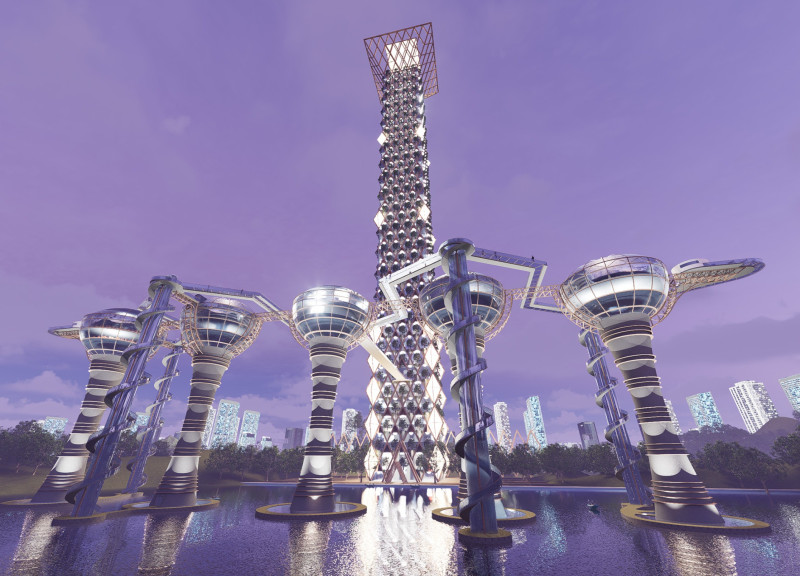5 key facts about this project
Strategically located in a bustling neighborhood, the building incorporates a blend of residential and communal areas, providing a diverse range of uses that cater to the needs of its inhabitants and visitors. The design prioritizes accessibility and inclusivity, ensuring that all spaces are easily navigable while promoting social connections among various user groups. By incorporating multi-functional areas and open spaces, the project encourages collaboration and social engagement, which are essential in urban living.
The architectural language of the project speaks to the characteristics of its environment, drawing inspiration from local materials and traditional building methods while embracing modern construction techniques. This fusion of past and present is evident in both the facade and internal spaces, which showcase the use of sustainable materials that not only reflect an ecological approach but also enhance the building's overall aesthetic. Notably, materials such as sustainably sourced timber and low-emissivity glass have been utilized extensively, allowing for natural light to permeate the interiors while optimizing energy efficiency.
Additionally, the design exhibits a keen awareness of the surrounding landscape. Landscaping elements are intricately woven into the project, with green roofs and vertical gardens that contribute both to biodiversity and to the well-being of occupants. The exterior spaces are designed to be inviting and engaging, featuring seating areas, pathways, and spaces for events and community gatherings, which enhance the public realm and encourage a lively atmosphere.
Unique design approaches are evident throughout the project. Key to its success is the incorporation of passive design strategies that maximize natural ventilation and minimize energy consumption, aligning with contemporary architectural trends focused on sustainability. The building orientation has been carefully considered to harness daylight effectively, reducing the reliance on artificial lighting and creating a more comfortable indoor environment.
Moreover, the architectural layout takes advantage of flexible spatial configurations, allowing for easy adaptation in response to changing needs over time. This adaptability is crucial in urban settings, where demographic shifts and evolving lifestyles may demand different spatial functionalities. By prioritizing durability and timelessness in architectural design, the project aims to remain relevant and usable for generations.
At its core, this project represents a commitment to fostering a sense of community while respecting the intricacies of its context. The thoughtful integration of shared spaces, sustainable practices, and attention to detail positions it as a valuable addition to the urban fabric. The ambition to harmonize aesthetics with functionality resonates throughout the design, making it an exemplary model of contemporary architecture.
For those interested in exploring the intricacies of this project further, reviewing the architectural plans, sections, and designs will provide deeper insights into the underlying ideas and principles that shape this engaging architectural endeavor.


 Gad Gal,
Gad Gal,  Ben Maier
Ben Maier 




















